Baris Fidan
Dual Agent Learning Based Aerial Trajectory Tracking
Oct 31, 2024Abstract:This paper presents a novel reinforcement learning framework for trajectory tracking of unmanned aerial vehicles in cluttered environments using a dual-agent architecture. Traditional optimization methods for trajectory tracking face significant computational challenges and lack robustness in dynamic environments. Our approach employs deep reinforcement learning (RL) to overcome these limitations, leveraging 3D pointcloud data to perceive the environment without relying on memory-intensive obstacle representations like occupancy grids. The proposed system features two RL agents: one for predicting UAV velocities to follow a reference trajectory and another for managing collision avoidance in the presence of obstacles. This architecture ensures real-time performance and adaptability to uncertainties. We demonstrate the efficacy of our approach through simulated and real-world experiments, highlighting improvements over state-of-the-art RL and optimization-based methods. Additionally, a curriculum learning paradigm is employed to scale the algorithms to more complex environments, ensuring robust trajectory tracking and obstacle avoidance in both static and dynamic scenarios.
Approximate Environment Decompositions for Robot Coverage Planning using Submodular Set Cover
Sep 04, 2024



Abstract:In this paper, we investigate the problem of decomposing 2D environments for robot coverage planning. Coverage path planning (CPP) involves computing a cost-minimizing path for a robot equipped with a coverage or sensing tool so that the tool visits all points in the environment. CPP is an NP-Hard problem, so existing approaches simplify the problem by decomposing the environment into the minimum number of sectors. Sectors are sub-regions of the environment that can each be covered using a lawnmower path (i.e., along parallel straight-line paths) oriented at an angle. However, traditional methods either limit the coverage orientations to be axis-parallel (horizontal/vertical) or provide no guarantees on the number of sectors in the decomposition. We introduce an approach to decompose the environment into possibly overlapping rectangular sectors. We provide an approximation guarantee on the number of sectors computed using our approach for a given environment. We do this by leveraging the submodular property of the sector coverage function, which enables us to formulate the decomposition problem as a submodular set cover (SSC) problem with well-known approximation guarantees for the greedy algorithm. Our approach improves upon existing coverage planning methods, as demonstrated through an evaluation using maps of complex real-world environments.
Anytime Replanning of Robot Coverage Paths for Partially Unknown Environments
Nov 29, 2023
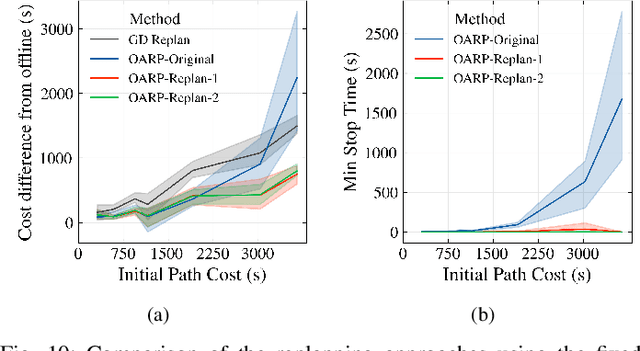

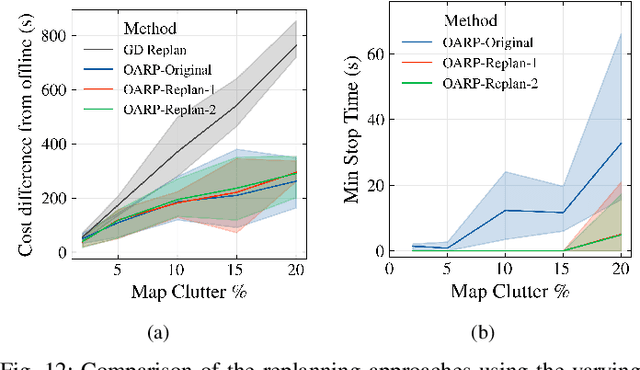
Abstract:In this paper, we propose a method to replan coverage paths for a robot operating in an environment with initially unknown static obstacles. Existing coverage approaches reduce coverage time by covering along the minimum number of coverage lines (straight-line paths). However, recomputing such paths online can be computationally expensive resulting in robot stoppages that increase coverage time. A naive alternative is greedy detour replanning, i.e., replanning with minimum deviation from the initial path, which is efficient to compute but may result in unnecessary detours. In this work, we propose an anytime coverage replanning approach named OARP-Replan that performs near-optimal replans to an interrupted coverage path within a given time budget. We do this by solving linear relaxations of mixed-integer linear programs (MILPs) to identify sections of the interrupted path that can be optimally replanned within the time budget. We validate our approach in simulation using maps of real-world environments and compare our approach against a greedy detour replanner and other state-of-the-art approaches.
Optimal Partitioning of Non-Convex Environments for Minimum Turn Coverage Planning
Sep 16, 2021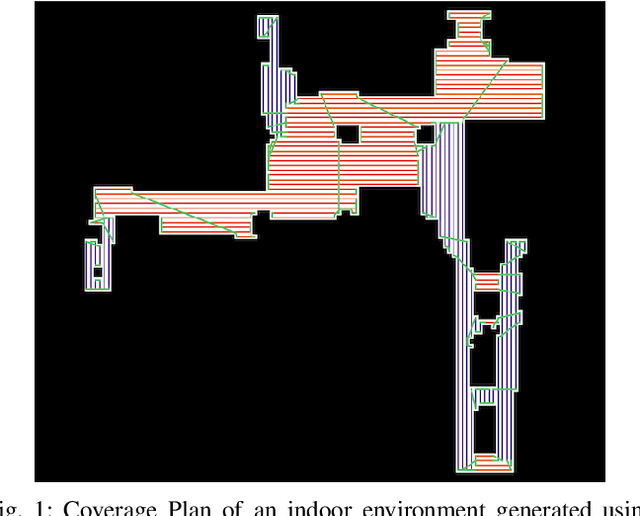
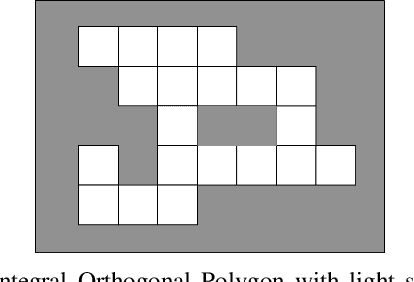
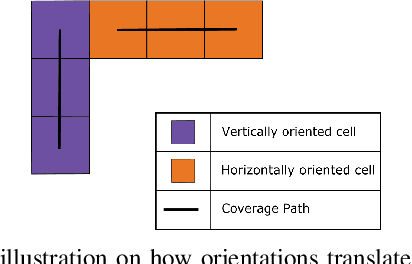
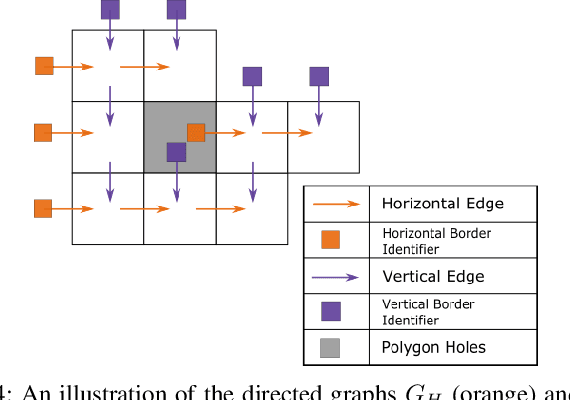
Abstract:In this paper, we tackle the problem of generating a turn-minimizing coverage plan for a robot operating in an indoor environment. In coverage planning, the number of turns in the generated path affects the time to cover the environment and the quality of coverage, e.g. tools like cameras and cleaning attachments commonly have poor performance around turns. In many existing turn-minimizing coverage methods, the environment is partitioned into the least number of ranks, which are non-intersecting rectangles of width equal to the robot's tool width. This partitioning problem is typically solved using heuristics that do not guarantee optimality. In this work, we propose a linear programming (LP) approach to partition the environment into the least number of axis-parallel (horizontal and vertical) ranks with the goal of minimizing the number of turns taken by the robot. We prove that our LP method solves this problem optimally and in polynomial time. We then generate coverage plans for a set of indoor environments using the proposed LP method and compare the results against that of a state-of-the-art coverage approach.
Planar Cooperative Extremum Seeking with Guaranteed Convergence Using A Three-Robot Formation
Sep 11, 2018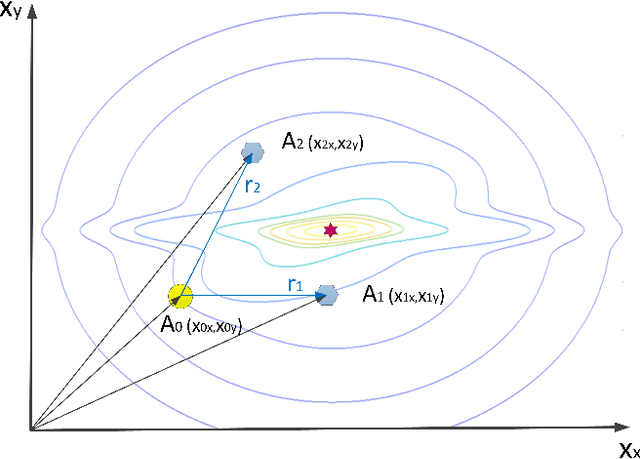
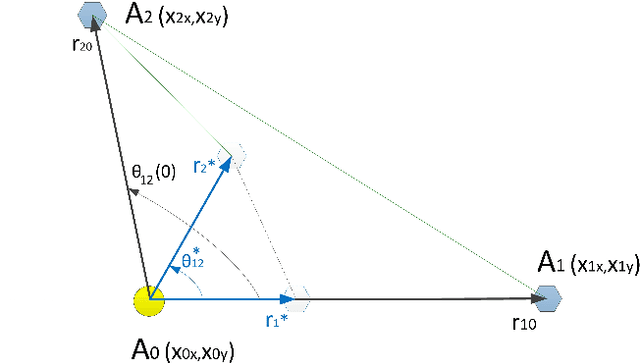
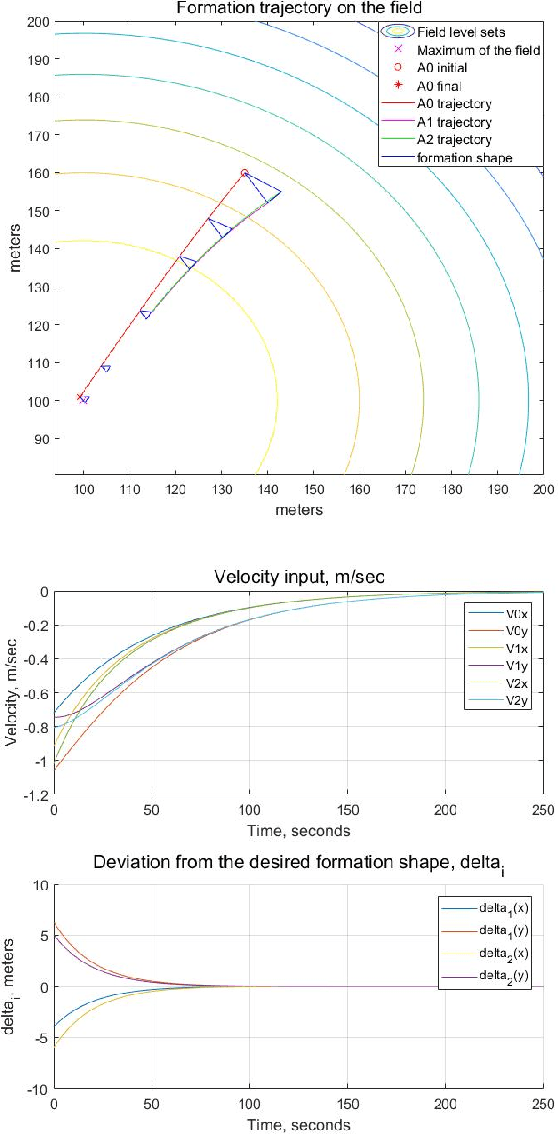
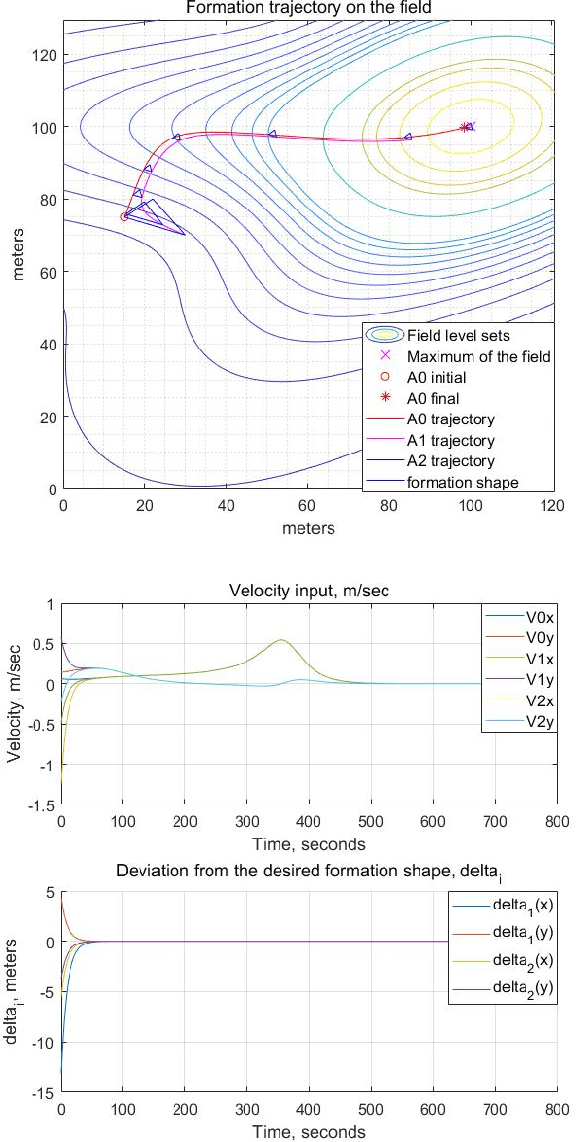
Abstract:In this paper, a combined formation acquisition and cooperative extremum seeking control scheme is proposed for a team of three robots moving on a plane. The extremum seeking task is to find the maximizer of an unknown two-dimensional function on the plane. The function represents the signal strength field due to a source located at maximizer, and is assumed to be locally concave around maximizer and monotonically decreasing in distance to the source location. Taylor expansions of the field function at the location of a particular lead robot and the maximizer are used together with a gradient estimator based on signal strength measurements of the robots to design and analyze the proposed control scheme. The proposed scheme is proven to exponentially and simultaneously (i) acquire the specified geometric formation and (ii) drive the lead robot to a specified neighborhood disk around maximizer, whose radius depends on the specified desired formation size as well as the norm bounds of the Hessian of the field function. The performance of the proposed control scheme is evaluated using a set of simulation experiments.
 Add to Chrome
Add to Chrome Add to Firefox
Add to Firefox Add to Edge
Add to Edge